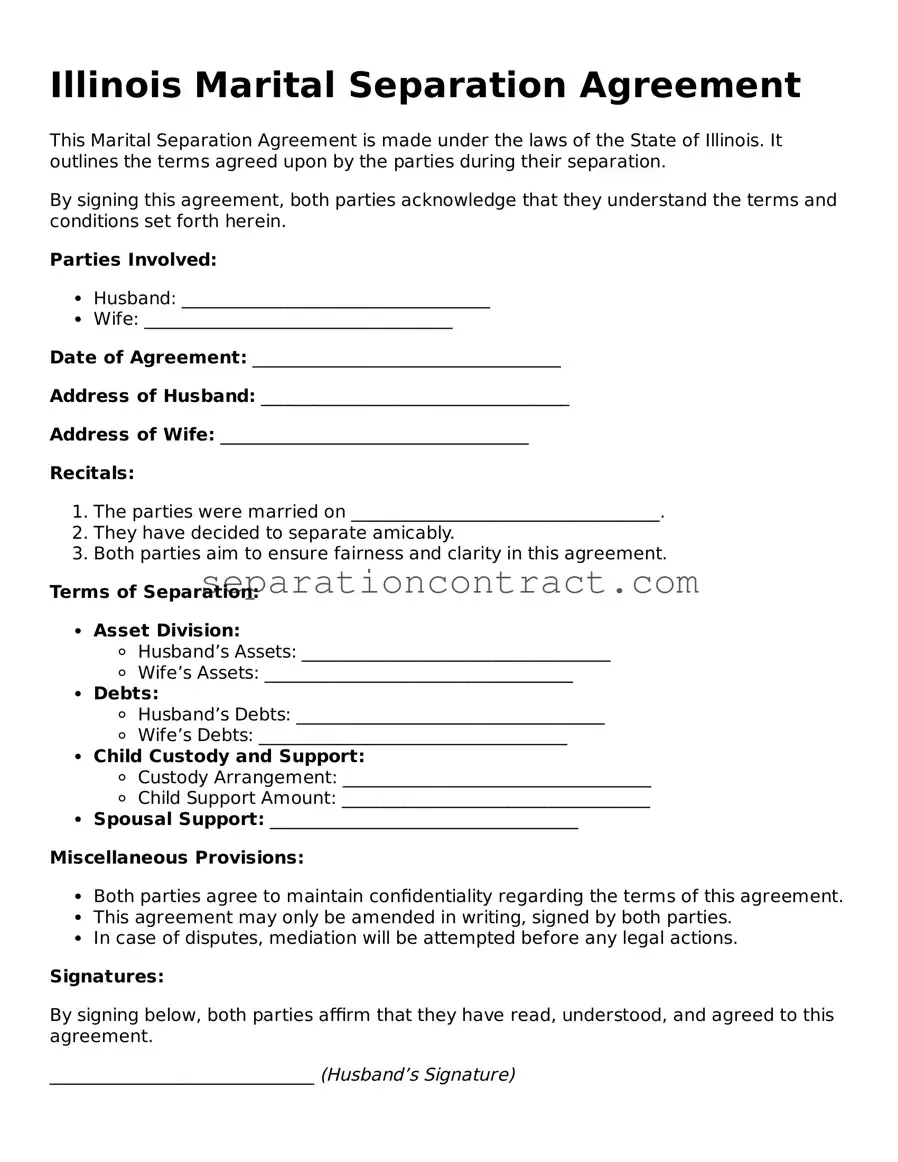Filling out the Illinois Marital Separation Agreement form can be a daunting task. Many individuals make common mistakes that can lead to complications down the line. One frequent error is failing to include all necessary information. It is crucial to provide complete details about both parties, including full names, addresses, and dates of birth. Missing even one piece of information can delay the processing of the agreement.
Another common mistake is not clearly outlining the terms of separation. It is important to specify how assets and debts will be divided. Vague language can lead to misunderstandings and disputes later on. Clarity in this section helps both parties understand their rights and responsibilities.
Many people overlook the importance of addressing child custody and support arrangements. If children are involved, the agreement must include specific provisions regarding custody, visitation, and financial support. Failing to address these issues can result in further legal complications and emotional distress for all parties involved.
Additionally, individuals often neglect to consider tax implications when dividing assets. Certain assets may have tax consequences that could affect both parties. It is wise to consult with a financial advisor or tax professional to ensure that the division of assets is fair and beneficial.
Another mistake is not signing the agreement in front of a notary. A notarized signature adds a layer of authenticity and can help prevent disputes about the validity of the agreement. Without notarization, the agreement may be challenged in the future.
Some individuals also fail to keep copies of the signed agreement. After everything is finalized, it is essential to retain copies for personal records. This can be helpful if any questions arise later regarding the terms of the separation.
Moreover, many people rush through the process without fully understanding the implications of their decisions. Taking the time to review each section of the agreement carefully can prevent regrets later. Seeking legal advice can provide valuable insights and ensure that all aspects of the agreement are fair and reasonable.
Another common oversight is not updating the agreement after significant life changes. Events such as job loss, remarriage, or changes in custody arrangements may necessitate revisions to the original agreement. Keeping the document current is vital for reflecting the parties' current circumstances.
Lastly, individuals sometimes underestimate the importance of communication. Open dialogue between both parties can facilitate a smoother process. Misunderstandings often arise from assumptions, so discussing expectations can lead to a more amicable separation.
By being mindful of these common mistakes, individuals can navigate the Illinois Marital Separation Agreement process more effectively. Taking the time to ensure accuracy and clarity can lead to a more positive outcome for everyone involved.
